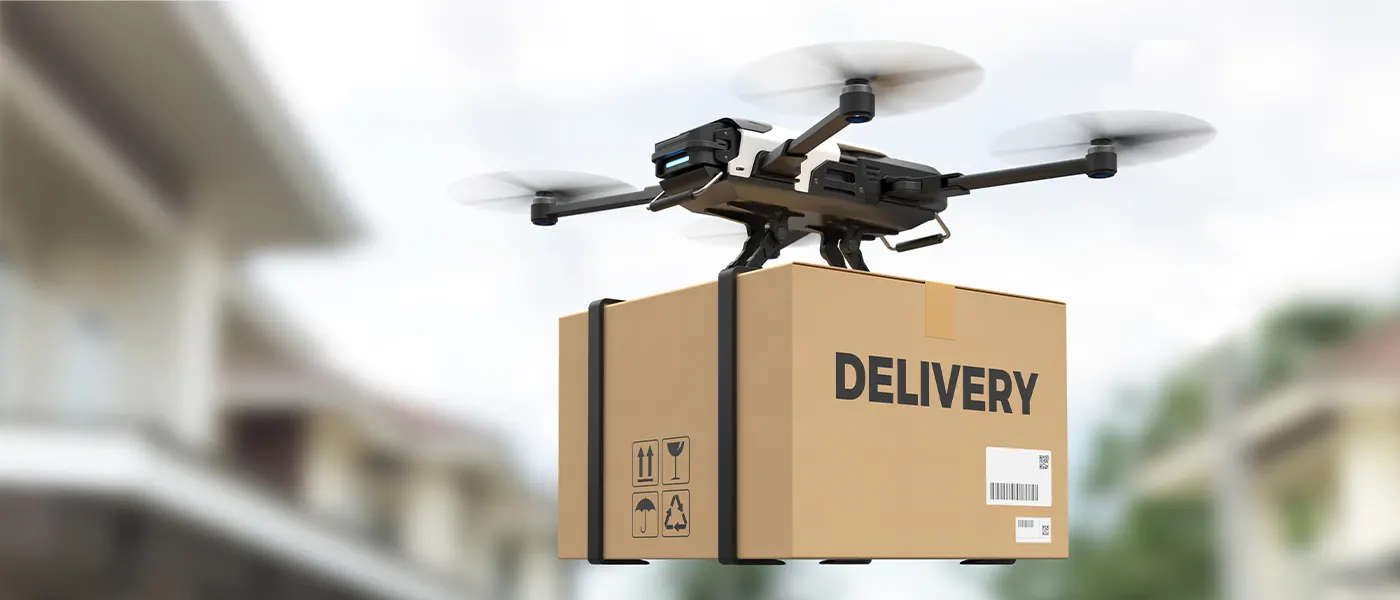The Philippine e-commerce landscape is booming, but with e-commerce transcending borders and increasing the reach of businesses, the ambitions of Filipino enterprises stretch far beyond domestic borders. The allure of reaching international customers and shoppers across other Southeast Asian countries, diversifying revenue streams, and establishing a global brand is a reality that brands are pursuing.
Cross-border e-commerce in the Philippines unlocks this exciting potential, yet navigating its complexities requires understanding various legalities and regulations, careful planning, a strategic approach, and a 3PL partner with expertise in trade services, IoR and SoR capabilities.
This comprehensive guide empowers Philippine enterprises with the knowledge and insights needed to conquer the cross-border frontier, transforming their aspirations into tangible realities.
A Guide to the Philippines E-commerce Industry

The Philippines boasts a robust e-commerce infrastructure and a digitally savvy population, making it a prime location for businesses looking to venture into Southeast Asia. Here’s how Filipino sellers can leverage this potential to reach customers in Singapore, Malaysia, and Thailand:
Capitalize on Regional Growth
Southeast Asia’s e-commerce market is experiencing a collective surge, with Singapore, Malaysia, and Thailand witnessing significant growth. This presents a lucrative opportunity for Philippine sellers to expand their customer base beyond domestic borders.
Understanding Diverse Preferences
While the core principles of e-commerce remain similar across the region, each market possesses unique characteristics:
- Singapore: Highly tech-savvy population with a preference for established online platforms and a wider adoption of cashless transactions.
- Malaysia: Strong mobile commerce penetration and a growing demand for diverse product categories.
- Thailand: Significant social commerce influence and a price-sensitive consumer base.
Building a Cross-Border Strategy
- Market Research: Thoroughly research each target market to understand consumer preferences, popular online platforms, and preferred payment methods.
- Logistics Partnerships: Partner with reliable 3PL providers offering efficient cross-border delivery solutions, including customs clearance expertise.
- Localization: Consider translating product descriptions and marketing materials to cater to the local languages of your target markets.
- Payment Gateway Integration: Integrate popular payment methods like credit cards, e-wallets, and potentially Cash on Delivery (COD) depending on the specific market.
Leveraging Philippine Strengths
The Philippines offers several advantages for cross-border e-commerce:
- Competitive Production Costs: Philippine manufacturers often enjoy lower production costs compared to its regional neighbors.
- Strong Creative Workforce: The Philippines boasts a talented pool of designers and artisans, allowing sellers to offer unique and competitively priced products.
Trends in SEA Online Retail Market
Southeast Asia’s e-commerce market is witnessing a phenomenal rise, driven by a surge in internet and smartphone penetration, along with a growing young demographic. Here are some key trends shaping the online retail landscape:
1. The Rise of Social Commerce: Social media platforms like Facebook, Instagram, and TikTok are transforming into powerful shopping avenues. Live streaming features and in-app purchases allow consumers to seamlessly discover and buy products within the social media ecosystem.
2. Mobile-First Shopping: Southeast Asia boasts one of the highest mobile phone penetration rates globally. Consumers are increasingly comfortable making purchases through their smartphones, necessitating mobile-friendly online stores and streamlined mobile payment options.
3. Evolving Payment Landscape: While cash on delivery (COD) remains popular in some regions, digital wallets like GrabPay and ShopeePay are gaining significant traction, offering convenience and security. Additionally, the growing acceptance of credit cards signifies a shift towards cashless transactions.
4. Omnichannel Experience: Consumers today expect a seamless shopping experience across different touchpoints. Businesses are integrating online and offline channels, allowing customers to research products online and potentially pick them up in-store or vice versa.
5. Focus on Personalization: Data-driven marketing strategies are crucial for capturing customer attention. Personalization through targeted advertising, product recommendations, and loyalty programs enhances customer engagement and drives sales.
6. Logistics and Last-Mile Delivery: Efficient and affordable last-mile delivery is paramount for customer satisfaction. Many e-commerce platforms are partnering with local delivery providers to ensure timely deliveries even in remote areas.
Strategies For Success For Philippine Cross Border
The Philippine e-commerce landscape is flourishing, and ambitious businesses are increasingly setting their sights beyond domestic shores. Cross-border e-commerce presents a golden opportunity to expand reach, diversify customer bases, and unlock significant revenue potential. However, navigating the complexities of international trade, cultural nuances, and logistical challenges requires careful planning and a strategic approach.
1. Unveiling Your Ideal Customers:
- Market Research: Conduct thorough market research to understand the preferences, buying behaviors, and cultural contexts of your target markets. Analyze regional trends, identify potential competitors, and utilize tools like Google Trends to gain valuable insights.
- Persona Development: Craft detailed buyer personas representing your ideal customers in each target market. Consider demographics, online shopping habits, preferred communication channels, and potential pain points to tailor your approach effectively.
2. Charting a Compliant Course:
- Regulatory Landscape: Research and understand all relevant import/export regulations, licensing requirements, and legal considerations specific to your industry and target markets. Consult with trade experts or lawyers to ensure compliance and avoid potential delays or penalties.
- Tax and Duty Optimization: Stay informed about import/export duties, VAT, and other tax implications to ensure smooth cross-border transactions and maintain compliance. Consider duty-free zones or Free Trade Agreements for potential cost benefits.
- Registrations Requirements: While product registration requirements may vary slightly across Southeast Asian nations, Philippine sellers generally don’t need separate product registrations to sell in countries like Singapore, Malaysia, and Thailand. However, adherence to each country’s specific regulations and safety standards remains crucial for a smooth cross-border e-commerce experience.
3. Finding Your Logistics Lighthouse:
- Fulfillment Partner Expertise: Evaluate and choose a reliable logistics partner offering efficient order fulfillment, inventory management, and cross-border shipping solutions aligned with your needs and budget. Consider partners with experience in handling international regulations and customs clearance.
- Scalability and Flexibility: Partner with a logistics provider who can adapt and scale their services alongside your business growth, especially during peak seasons and increased international demand.
- Transparency and Communication: Ensure clear communication and real-time visibility throughout the delivery process to enhance customer satisfaction and build trust. The logistics partner you work with should be able to provide you real-time updates on your inventory and provide shipping tracking for cross-border shipments.
4. Streamline Operations with Multi Channel Fulfillment:
- Expand Your Reach, Boost Your Sales: Sell across multiple channels – online marketplaces, your own web store, and even physical stores – to reach a wider audience and increase your sales potential. A strong logistics partner ensures seamless fulfillment across all channels.
- Frictionless Checkout, Satisfied Customers: Your logistics provider should offer a variety of secure payment options and a smooth checkout experience, regardless of the sales channel. This minimizes cart abandonment and keeps customers happy.
- Unified B2B & B2C Fulfillment: Manage both B2B and B2C orders efficiently with an integrated Order Management System (OMS). Track inventory levels across all channels in real-time and ensure timely deliveries, fostering trust with both businesses and consumers.
Why Filipino Businesses Should Embrace Cross-Border E-commerce
The Philippines boasts a vibrant domestic market, but Filipino businesses have the potential to reach even wider audiences. Cross-border e-commerce offers a wealth of opportunities to expand your reach, boost sales, and establish your brand on a global scale. Here’s why Filipino businesses should consider venturing into the exciting world of cross-border e-commerce:
1. Unleash Your Export Potential: Southeast Asia boasts a booming e-commerce market with over 600 million potential customers. Filipino businesses can tap into this vast market by offering unique and high-quality products sought after by regional consumers.
2. Reduced Geographic Barriers: Gone are the days of complex international trade procedures. Free Trade Agreements (FTAs) within ASEAN simplify cross-border trade, reducing tariffs and streamlining customs processes.
3. Showcase Filipino Excellence: Filipino craftsmanship and creativity are renowned worldwide. Cross-border e-commerce allows you to showcase your products to a global audience, fostering brand recognition and building a loyal international customer base.
4. Diversify Your Sales Channels: Selling across multiple online marketplaces and regions mitigates reliance on a single market. This diversification can provide a safety net, protecting your business from economic fluctuations within the Philippines.
Factors to consider during Cross-Border Expansion for Phillipine Sellers
1. Streamlined Shipping and Global Delivery:
- Enhanced Infrastructure: Leverage the continuously improving global logistics network, including expanded shipping routes, advanced transportation technologies, and strategic partnerships, to ensure cost-efficient and reliable delivery to new markets.
- Regional Distribution Hubs: Consider establishing regional distribution hubs to optimize inventory management, reduce transit times, and ensure faster fulfillment for international customers.
- Streamlined Customs Processes: Collaborate with experienced customs brokers to navigate complex regulations and minimize clearance delays, ensuring smooth flow of goods across borders.
2. Expanding Horizons and Diversifying Revenue Streams:
- New Customer Segments: Access untapped markets with distinct needs and preferences, offering your products and services to a broader audience and diversifying your customer base.
- Market Saturation Mitigation: Reduce dependence on domestic markets, mitigating the risk of saturation and fostering long-term business stability and growth.
- Economic Diversification: Benefit from economic fluctuations in different regions, mitigating financial risks associated with reliance on a single market.
3. Expanding Your Reach and Building Brand Recognition:
- Global Brand Presence: Establish your brand on the international stage, increasing brand awareness and recognition beyond your domestic market.
- Market Share Growth: Capture a larger share of the global market for your products or services, driving increased sales and revenue.
- Competitive Advantage: Position yourself as a global player, attracting new talent, partnerships, and investment opportunities.
Duties And Taxes In The Philippines
Successfully exporting your products from the Philippines requires understanding the associated duties and taxes. Here’s a breakdown of the key considerations:
1. Know Your HS Code: Classify your products accurately using the Harmonized System (HS) code. This code determines the applicable duty rates imposed by the importing country. The Philippine Tariff Commission website offers an HS code finder to assist you.
2. Understanding Philippine Duties: While exports are generally exempt from Philippine taxes, there are specific instances where certain fees may apply. These can include:
3. Documentary Stamp Tax: A minimal tax imposed on some export documents.
4. Value Added Tax (VAT): VAT exemption may apply depending on the product category and export value. It’s advisable to consult with a customs broker for specific details.
5. Destination Country Duties and Regulations: Research the import duties and regulations imposed by the country you’re exporting to. These can vary significantly and may include customs duties, import taxes, and value-added tax (VAT) upon import.
Optimizing Your Export Journey:
1. Free Trade Agreements (FTAs): The Philippines has FTAs with various countries, offering reduced or eliminated import duties for qualifying products. Explore these agreements to see if your target market offers any benefits.
2. Seek Expert Advice: Consider consulting a customs broker or freight forwarder. They can provide guidance on navigating Philippine export procedures, calculating duties, and ensuring compliance with regulations.
Why should you partner with a 3PL for cross-border selling
Importing goods into the Philippines requires strict adherence to regulations aimed at protecting public health, safety, national security, and the environment. Which is why understanding the market is of utmost importance. Partnering with a logistics provider with local knowledge can help you traverse this nation seamlessly. Apart from the aforementioned, a good logistics provider can ensure you have visibility into your inventory and thus allows you to keep your engine running and avoid stockouts.
Moreover, partnering with the right logistics provider can help you integrate tech with your supply chain and take care of everything from first to last mile, all under the same roof. This minimizes chances for discrepancies and other problems that may arise when it comes to cross border logistics.
Mid-mile Logistics in Malaysia
By embracing the cultural tapestry of your target markets, prioritizing seamless customer experiences, and fostering trust through transparent communication, you can transcend mere transactions and cultivate lasting relationships with international customers.
The journey in cross-border e-commerce is dynamic, demanding continuous learning and adaptation. Yet, with the right tools, knowledge, and a commitment to excellence, Philippine enterprises can confidently navigate this exciting landscape, leaving their mark on the global stage and achieving sustainable success in the ever-evolving world of online commerce.






